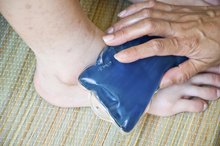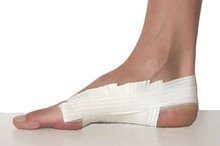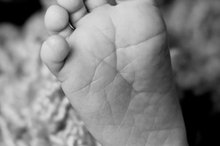Why Does My Achilles Tendon Hurt?
The Achilles tendon is the largest tendon in the body. It is located in the heel, where the heel and the calf bone connect, and is named after a Greek mythological character Achilles whose only spot of vulnerability was in his heel. The Achilles tendon can withstand up to 1,000 pounds of force, but it is still the most frequently ruptured tendon in the body.
Heel Pain
When you walk, the heel is the first part of the foot to touch the ground, so it sustains a great deal of pressure. Every mile a person walks puts approximately 60 tons of stress on the foot. Excess amounts of stress, caused by over-exertion or other improper athletic behavior, can cause pain in the Achilles heel. Typically, resting to minimize the stress will resolve the problem of pain in the Achilles tendon, but there are two common conditions that require intervention by a physician: tendinitis (which is the most common Achilles heel problem) and Retrocalcaneal Bursitis.
Achilles Tendonitis
Have Heel Spurs? How to Strap Your Foot
Learn More
Tendinitis is the most common cause of Achilles heel pain. It is typically the result of a rapid increase in speed of running or length of running. It may also occur if you begin to run without properly warming up and stretching the tendon, or if you run up an incline like stairs or a hill.
Symptoms of Achilles Tendonitis
Tendonitis has certain symptoms that distinguish it from other Achilles tendon injuries, such as a simple sprain or retrocalcaneal brusitis. Specific symptoms associated with tendonitis include a sluggish feeling in the leg, progressively worsening pain after exercise, bursts of pain during running or shortly after, tenderness between the Achilles tendon and heel bone, swelling or stiffness.
Retrocalcaneal Bursitis
Symptoms of a Torn Tendon in the Big Toe
Learn More
Retrocalcaneal bursitis is another common cause of Achilles tendon pain. Retrocalcaneal bursitis occurs when there is inflammation in the spot between the Achilles tendon and the heel bone. This inflammation can result from wearing improperly fitting shoes that cut into the heel, or by running too frequently. Left untreated, the pain associated with Retrocalcaneal bursitis becomes progressively worse and eventually skin on the back of the heel will become thick, swollen and red. Eventually, a tender bump or bone spur might develop, and wearing normal shoes may become impossible.
Treatment
Achilles tendon pain, caused by a sprain or one of the specifically mentioned conditions, can be treated both surgically and non-surgically. Typically, rest and pain medications (NSAIDs- over the counter anti-inflammatory medications) are the first method of treatment for Achilles tendon pain. Special shoes or shoe inserts may be recommended as well, along with bandages or support devices to support the tendon. Surgery is a last resort for the treatment of retrocalcaneal bursitis and tendonitis.








